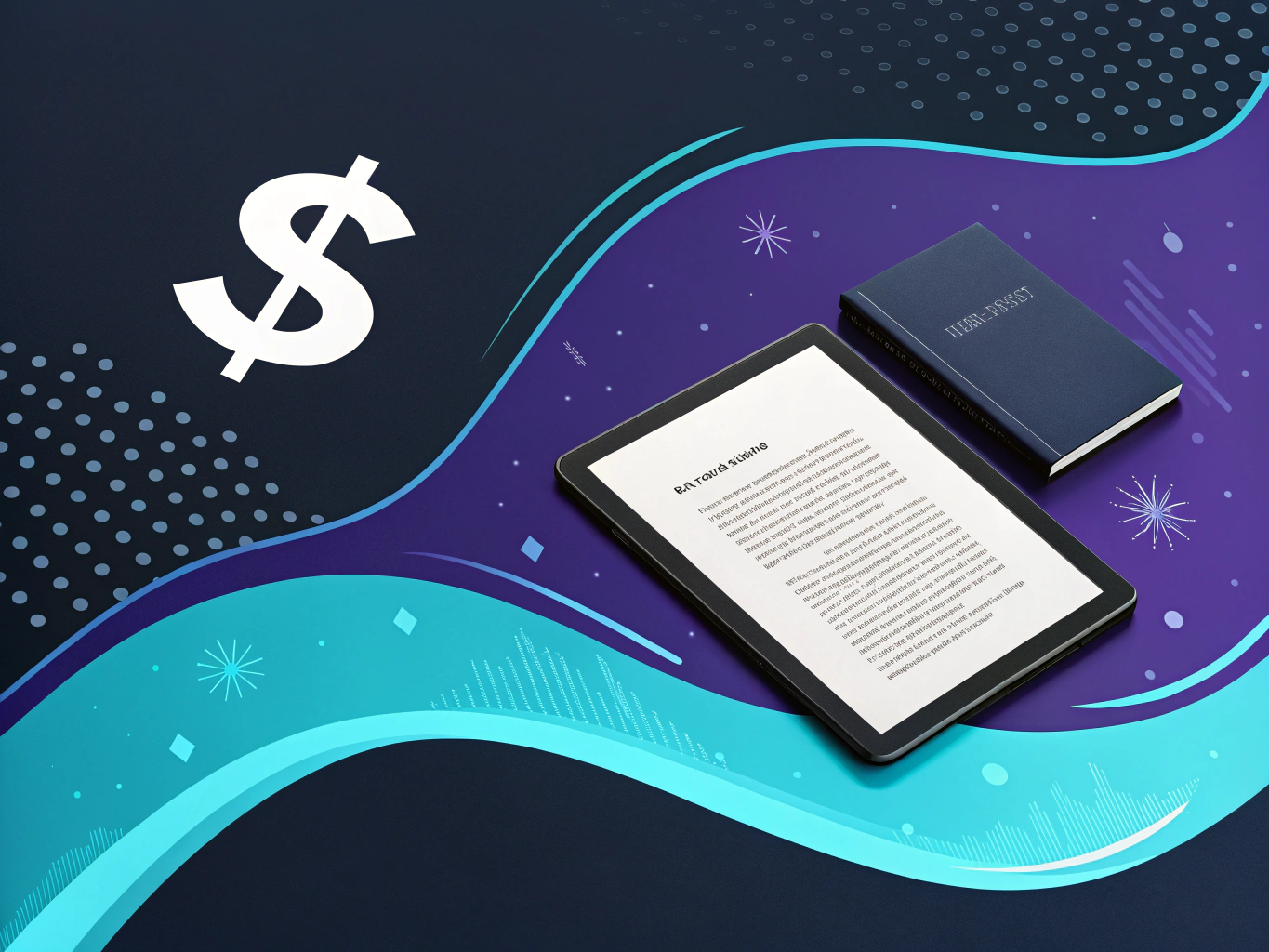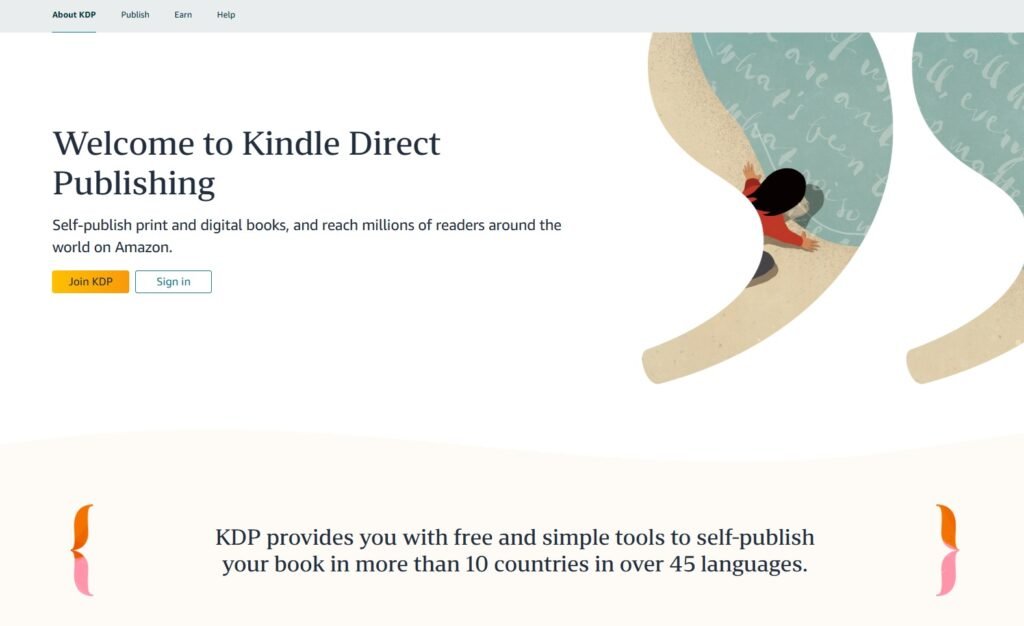Remember when self-publishing was considered the “vanity press” option? The path that “real authors” wouldn’t touch with a ten-foot pole? Well, times have changed dramatically. Amazon’s KDP self publishing platform has completely flipped the script on traditional publishing, creating millionaire authors and giving voice to stories that might never have seen the light of day through conventional channels.

But here’s the thing – while everyone’s talking about how easy it is to publish on KDP (just upload your file and hit publish, right?), the reality is both more complex and more interesting than that. As someone who’s helped countless brands navigate the digital marketplace, I can tell you that KDP self publishing success lives in the details most people overlook.
Understanding the KDP Self Publishing Ecosystem

Think of KDP like a massive digital bookstore where you’re both the author and the store manager. Through Amazon KDP publishing, you’re not just putting your book out there – you’re creating a micro-business. The Amazon KDP login is your key to this kingdom, but it’s what you do after logging in that makes all the difference.
The Foundation: Your KDP Bookshelf
Your kdp bookshelf is essentially your publishing command center. It’s where the magic happens – from manuscript uploads to sales tracking. But here’s what most guides won’t tell you: successful authors treat their kdp bookshelf like a product portfolio, not just a collection of books.
The Economics of Amazon Print on Demand
Let’s talk numbers, because they matter. Amazon’s print on demand system has revolutionized self-publishing economics. Gone are the days of storing thousands of books in your garage. Instead, when someone clicks “buy” on your paperback, Amazon print on demand kicks in, printing and shipping your book on the fly.
The beauty of this system? Zero upfront inventory costs. You can literally learn how to publish a book on Amazon for free. But – and this is crucial – “free to publish” doesn’t mean “free to succeed.” The most successful KDP authors I know invest strategically in their books, treating them like proper business assets.
Getting Started with KDP Self Publishing: The Essentials
Let’s be honest – the world of kdp self publishing can feel like navigating a spaceship without a manual. Everyone’s telling you it’s the next gold rush, but when you log into Amazon KDP for the first time, it’s more like walking into a control room with way too many buttons.
Here’s the thing though: it’s actually not that complicated once you break it down. Think of KDP like a really efficient intern who handles all the boring stuff – printing, distribution, payments – while you focus on creating something worth reading.
Setting Up Your KDP Account: The Foundation
First things first – head over to the Amazon KDP login page. You’ll need basic info like your tax details and banking information. It’s pretty straightforward, though the tax interview can feel like filling out paperwork for a space mission. Pro tip: your kdp bookshelf is going to become your new best friend – it’s where all your books will live.
The Economics of Amazon KDP Publishing
Now, let’s talk money – because that’s what you’re really wondering about, right? How much profit do you make self publishing through kdp? It varies wildly, but here’s the deal: for ebooks priced between $2.99 and $9.99, you’re looking at a 70% royalty. Below or above that? It drops to 35%. For paperbacks through Amazon print on demand, you’re typically looking at 60% minus printing costs.
Creating Your First Book on KDP

Image Source: kdp.amazon.com
Remember when everyone said “how to publish a book on amazon for free” was too good to be true? Well, they were wrong. The platform itself is completely free to use – you only pay when books sell. But here’s where most people mess up: they rush through the setup process like they’re trying to beat a speed record.
The key to success on kindle direct publishing isn’t just throwing your book up there and hoping for the best. It’s about understanding the platform’s quirks – like how the Amazon KDP account setup influences your book’s visibility, or how the right categories can make or break your launch.
Think of it this way: if traditional publishing is like trying to get into an exclusive club, KDP self publishing is like hosting your own party. Sure, you have to handle everything yourself, but you also get to make all the decisions. And trust me, that freedom is worth its weight in digital gold.
Advanced KDP Marketing Strategies That Actually Work
Let’s be honest – the KDP self publishing landscape in 2025 looks nothing like it did even two years ago. The gold rush days of throwing up any book and watching the sales roll in are long gone. But that doesn’t mean the opportunity isn’t there – it’s just evolved.
Think of KDP like Netflix’s content strategy. Just as Netflix shifted from licensing everything to carefully curating original content, successful KDP publishers are moving from quantity to quality. This is similar to how brands leverage Amazon store fronts to create a more immersive and engaging shopping experience instead of relying solely on individual product listings. The key? Strategic marketing that treats each book like a product launch. Just like retailers track what is the most popular Halloween costume each year to optimize sales, KDP authors need to stay ahead of reader trends to position their books effectively.
Making Your Book Stand Out in the Amazon Jungle
Here’s what most KDP guides won’t tell you: Amazon’s algorithm isn’t just about keywords anymore. It’s about engagement signals. Your Amazon KDP publishing strategy needs to create what I call “algorithmic momentum” – a combination of steady sales, positive reviews, and reader engagement that compounds over time.
The 10% rule for KDP (keeping your book in the top 10% of its category) isn’t just about initial launch momentum. It’s about sustained visibility. This is where tools like Amazon Marketing Services become crucial – think of them as your book’s digital billboard on the world’s busiest highway. Learn more about making money on Amazon.
The Real Economics of KDP Self Publishing

When people ask “Is KDP really profitable?” I tell them it’s like running a startup – your first attempt probably won’t be a home run. The kindle direct publishing login page might be free to access, but building a successful publishing business requires investment – in cover design, editing, and marketing.
But here’s the exciting part: once you crack the code, the scalability is incredible. I’ve seen creators go from wondering how to publish a book on amazon for free to building six-figure publishing businesses. The key? Understanding that your kdp bookshelf is actually a product portfolio.
Final Thoughts: The Future of Self Publishing
The biggest mistake I see new authors make with Amazon KDP publishing is treating it like a get-rich-quick scheme. It’s not. It’s a business platform that rewards strategic thinking, quality content, and persistent marketing. The opportunities are there – whether you’re publishing fiction, non-fiction, or specialized content – but success requires treating your publishing venture with the same seriousness as any other business. Just as retailers stock up on common Halloween costumes before October, authors should strategically time book releases to align with market demand.
Remember: in the world of KDP self publishing, the tortoise almost always beats the hare. Focus on building a sustainable presence, understand your readers deeply, and keep iterating on your approach. The market will only get more sophisticated – and that’s actually good news for serious creators willing to evolve with it.
For more advanced tools to boost your publishing efforts, explore options like the Amazon listing optimization tool.
👉👉 Create Photos, Videos & Optimized Content in minutes 👈👈
Related Articles:
- KDP Amazon Publishing: A Beginner’s Guide to Success
- Amazon KDP Login: Essential Steps to Start Publishing
- Amazon Print on Demand: A Beginner’s Guide to Success
Frequently Asked Questions
How much profit do you make self publishing through KDP?
The profit you make through KDP (Kindle Direct Publishing) depends on several factors, such as the price of your book, the royalty option you select, and your book’s sales performance. KDP offers two main royalty options: 35% and 70%. To qualify for the 70% royalty option, your ebook must be priced between $2.99 and $9.99 and meet certain distribution criteria. Ultimately, the potential profit can vary widely based on the success of your marketing efforts and the appeal of your book.
How much does it cost to self-publish with KDP?
Publishing with KDP itself is free, meaning you don’t pay any upfront costs to make your book available on Amazon. However, there are associated costs that you might incur, such as professional editing, cover design, and marketing. These additional expenses can range from a few hundred to several thousand dollars, depending on the quality and level of services you choose to invest in.
Is KDP really profitable?
KDP can be profitable, especially for authors who effectively market their books and build a dedicated readership. The platform provides access to a vast audience via Amazon, which can lead to substantial sales if your book gains traction. However, profitability is not guaranteed and often requires significant effort in terms of quality writing, strategic pricing, and ongoing promotional activities.
What is the 10% rule for KDP?
The 10% rule for KDP refers to the percentage of a book that potential buyers can preview for free on Amazon using the ‘Look Inside’ feature. This allows readers to sample the beginning of your book, which can help them decide whether to purchase it. Offering an engaging and well-edited preview is crucial, as it serves as a first impression to entice readers to buy the complete book.
What are the downsides to KDP?
One downside to KDP is the intense competition, as the platform is accessible to millions of authors, making it challenging for individual books to stand out. Additionally, authors are responsible for their own marketing and promotion, which can be time-consuming and costly. Furthermore, KDP’s exclusivity clauses, such as those in the Kindle Unlimited program, may limit your ability to distribute your book on other platforms if you opt in.
About the Author
Vijay Jacob is the founder and chief contributing writer for ProductScope AI focused on storytelling in AI and tech. You can follow him on X and LinkedIn, and ProductScope AI on X and on LinkedIn.
We’re also building a powerful AI Studio for Brands & Creators to sell smarter and faster with AI. With PS Studio you can generate AI Images, AI Videos, Chat and Automate repeat writing with AI Agents that can produce content in your voice and tone all in one place. If you sell on Amazon you can even optimize your Amazon Product Listings or get unique customer insights with PS Optimize.
🎁 Limited time Bonus: I put together an exclusive welcome gift called the “Formula,” which includes all of my free checklists (from SEO to Image Design to content creation at scale), including the top AI agents, and ways to scale your brand & content strategy today. Sign up free to get 200 PS Studio credits on us, and as a bonus, you will receive the “formula” via email as a thank you for your time.
